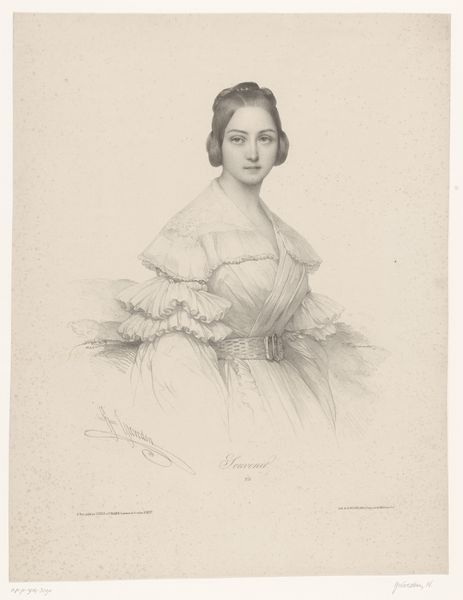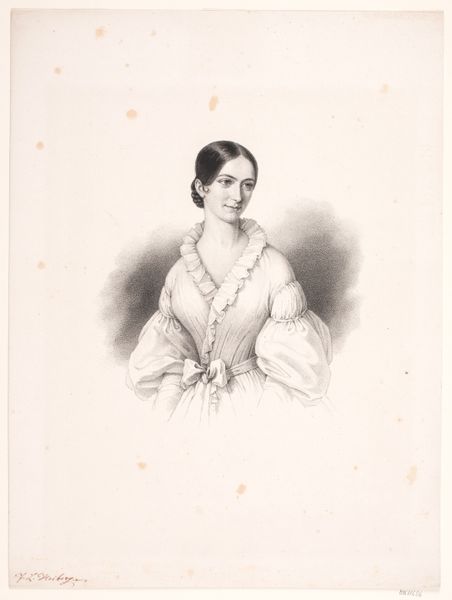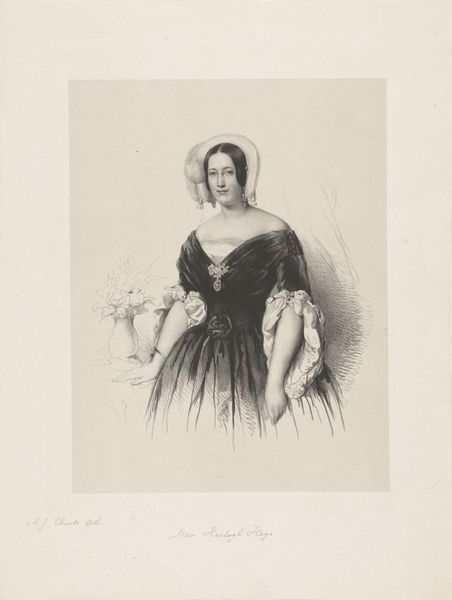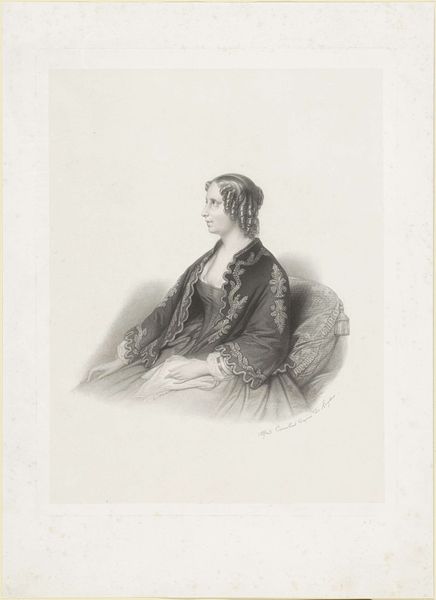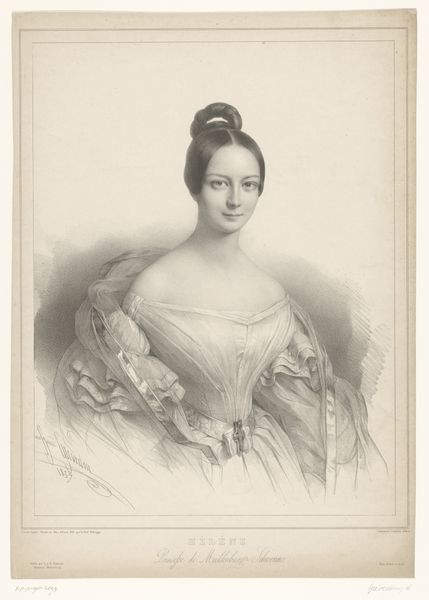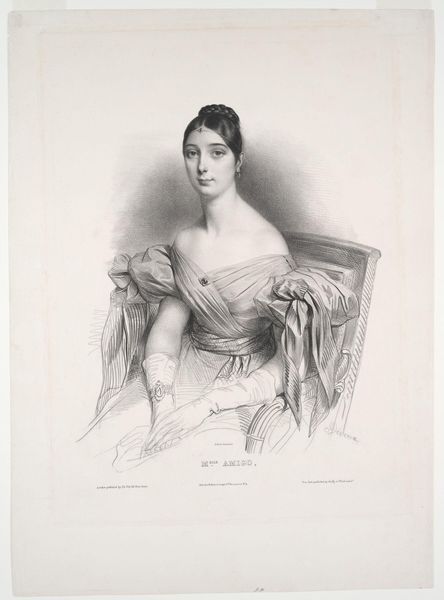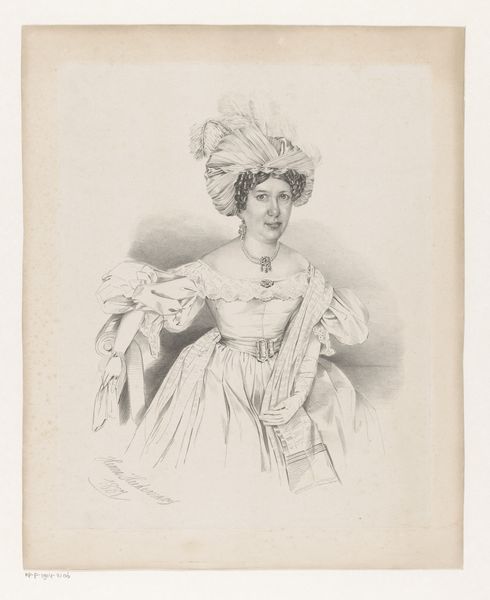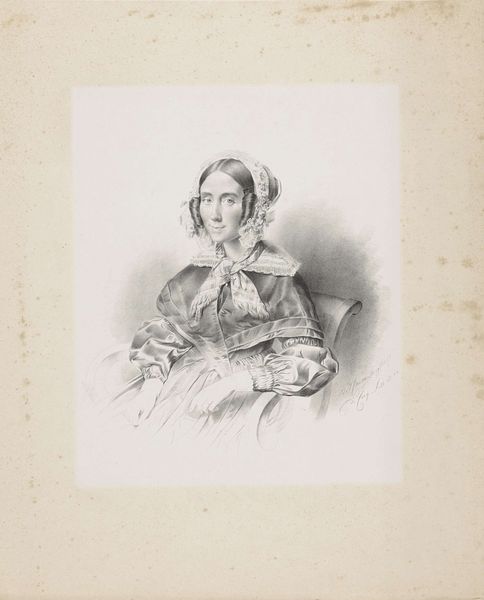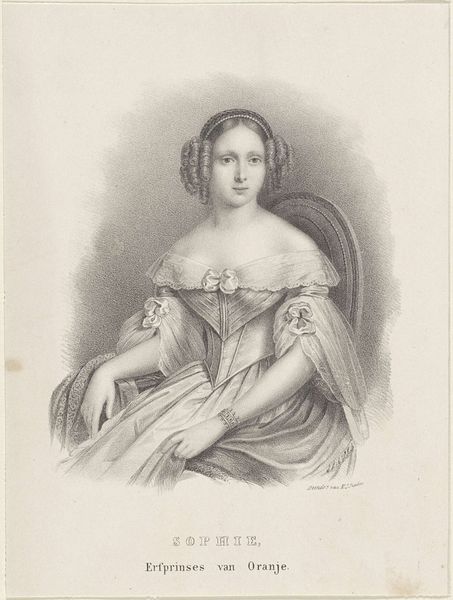
Dimensions: height 530 mm, width 377 mm
Copyright: Rijks Museum: Open Domain
Curator: Up next we have an 1854 pencil drawing by Léon Alphonse Noël. It’s entitled "Portret van Delphine Ugalde," which translates to "Portrait of Delphine Ugalde." Editor: What strikes me immediately is the subtle gradations of tone achieved solely through pencil. The softness lends the subject a serene, almost melancholic air. It's the texture that fascinates me. Curator: Delphine Ugalde, a celebrated opera singer of her time, wasn't just known for her vocal prowess. Her performances sparked much conversation around female artistry and the complex socio-political landscape of 19th-century Parisian theaters. How did her talent challenge or reinforce gender expectations, I wonder? Editor: If you focus on the structure, it's classically composed. The oval frame focuses our eye on the play of light across her features, then outwards to her ruffled bodice and her delicate hand positioning. A pure exercise in creating visual harmony. Curator: But that “visual harmony” you see is so deliberately constructed to uphold ideals of beauty and femininity valued within a patriarchal society. Think about how Romanticism influenced this era and idealized women. This portrait is a constructed representation and reinforces accepted norms. Editor: Perhaps, but look at the objective beauty of the line work. There is a dance happening between dark and light—it seems more about understanding form. Do we always need to dissect something beautiful purely through a contemporary critical lens? Curator: I would argue yes, precisely because these seemingly neutral aesthetic choices often serve specific ideological purposes. This artistic vision comes from a historical framework, influencing everything, even artistic conventions like this one. To ignore that feels like a disservice. Editor: I'll concede that understanding the historical background certainly enhances appreciation, but the pencilwork itself, its technical virtuosity, is its own language—one I can still decode. Curator: Absolutely. Looking closely helps to illuminate the intricate ties between art and society, revealing the broader cultural forces that helped shape it. Editor: And with every return, a deeper appreciation blossoms for the aesthetic strategies and artistry present.
Comments
No comments
Be the first to comment and join the conversation on the ultimate creative platform.


